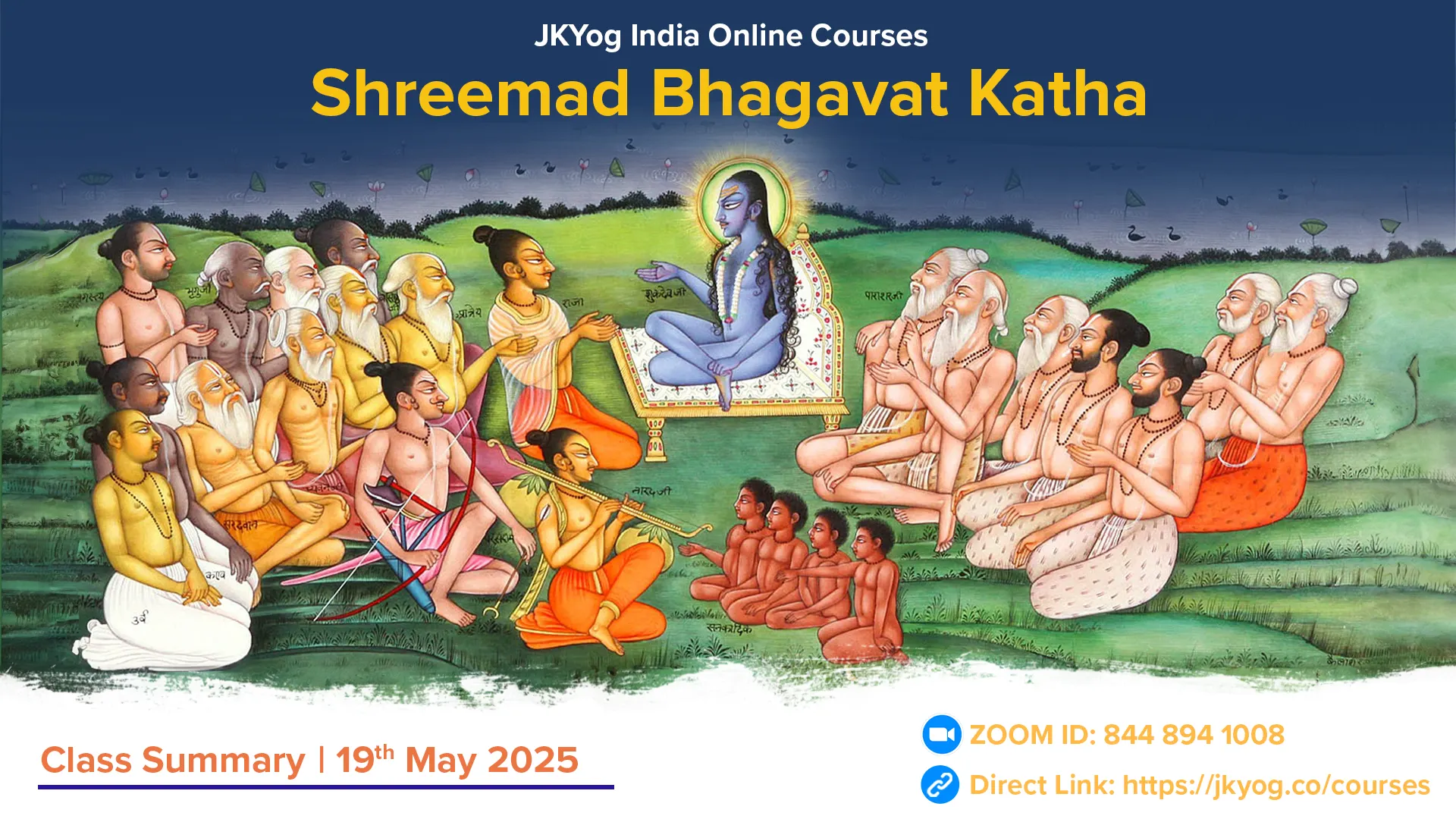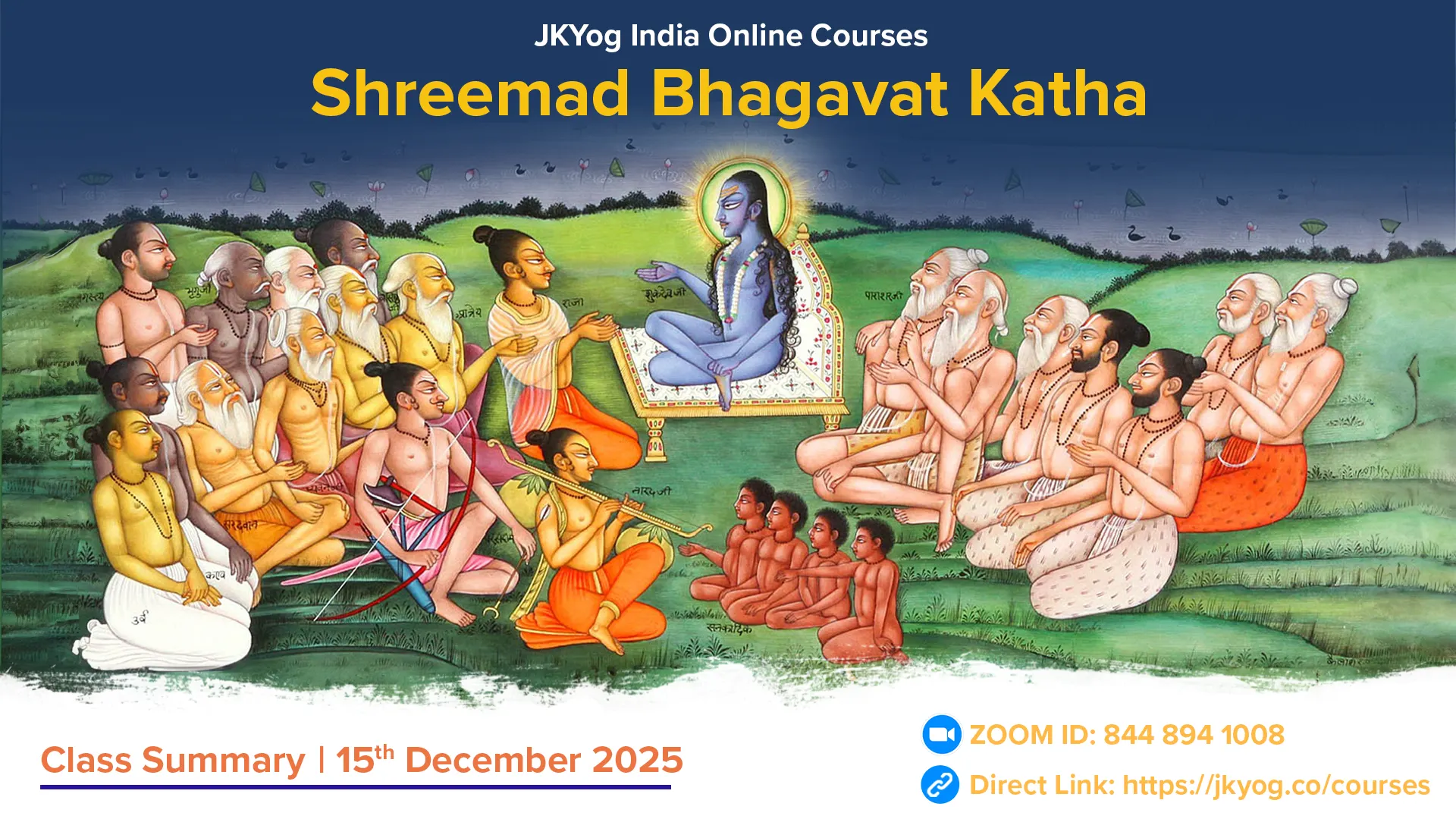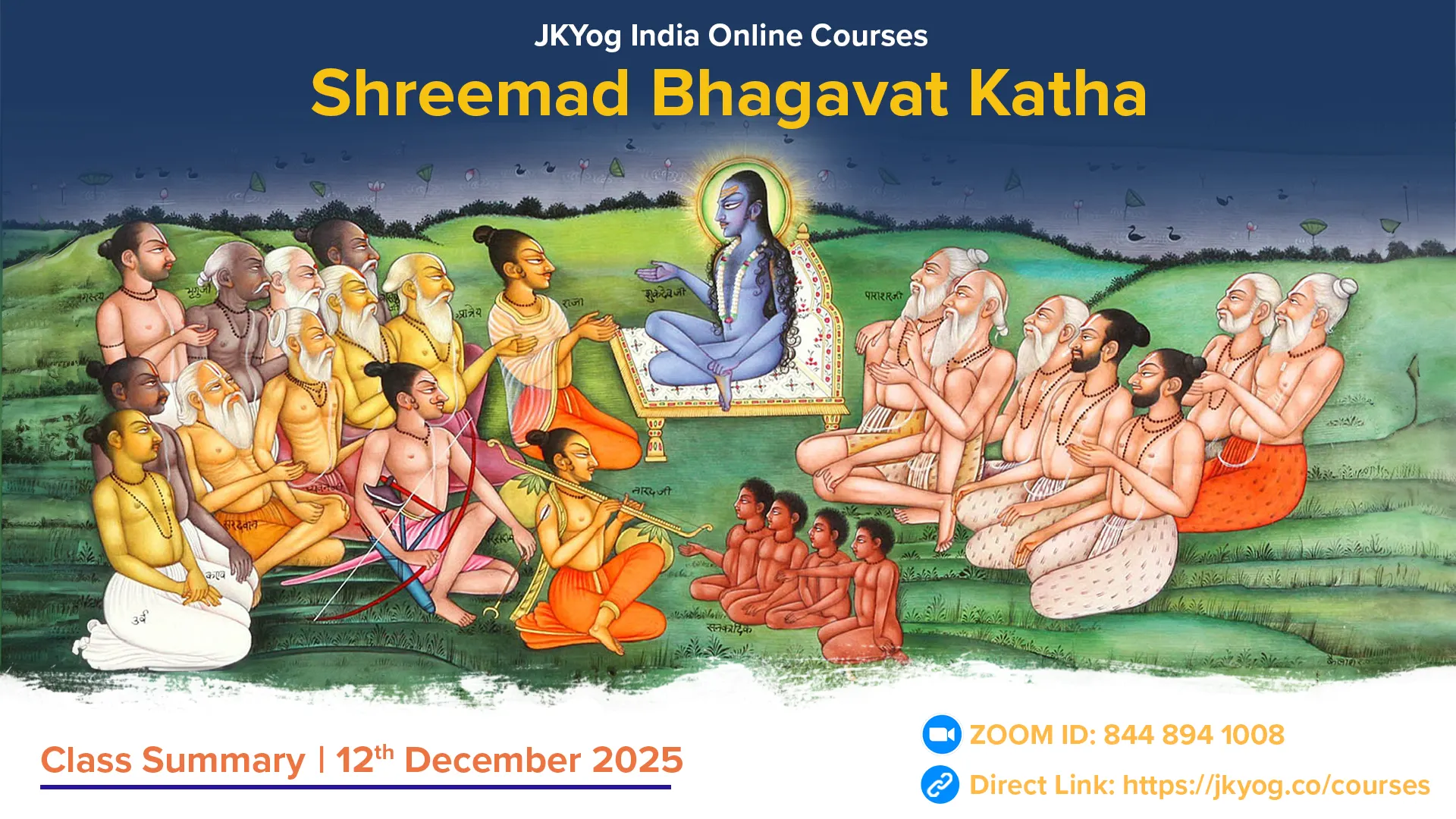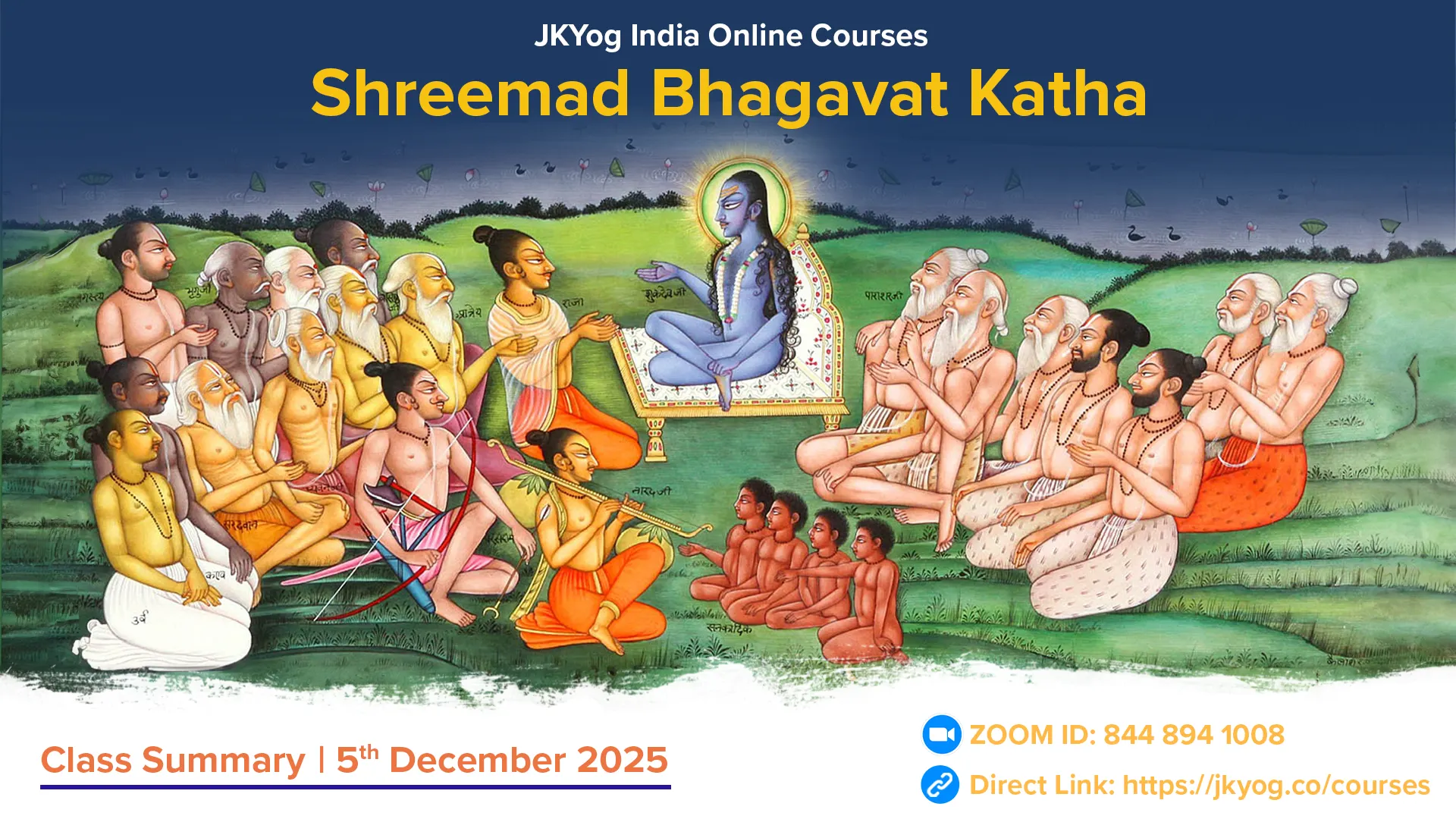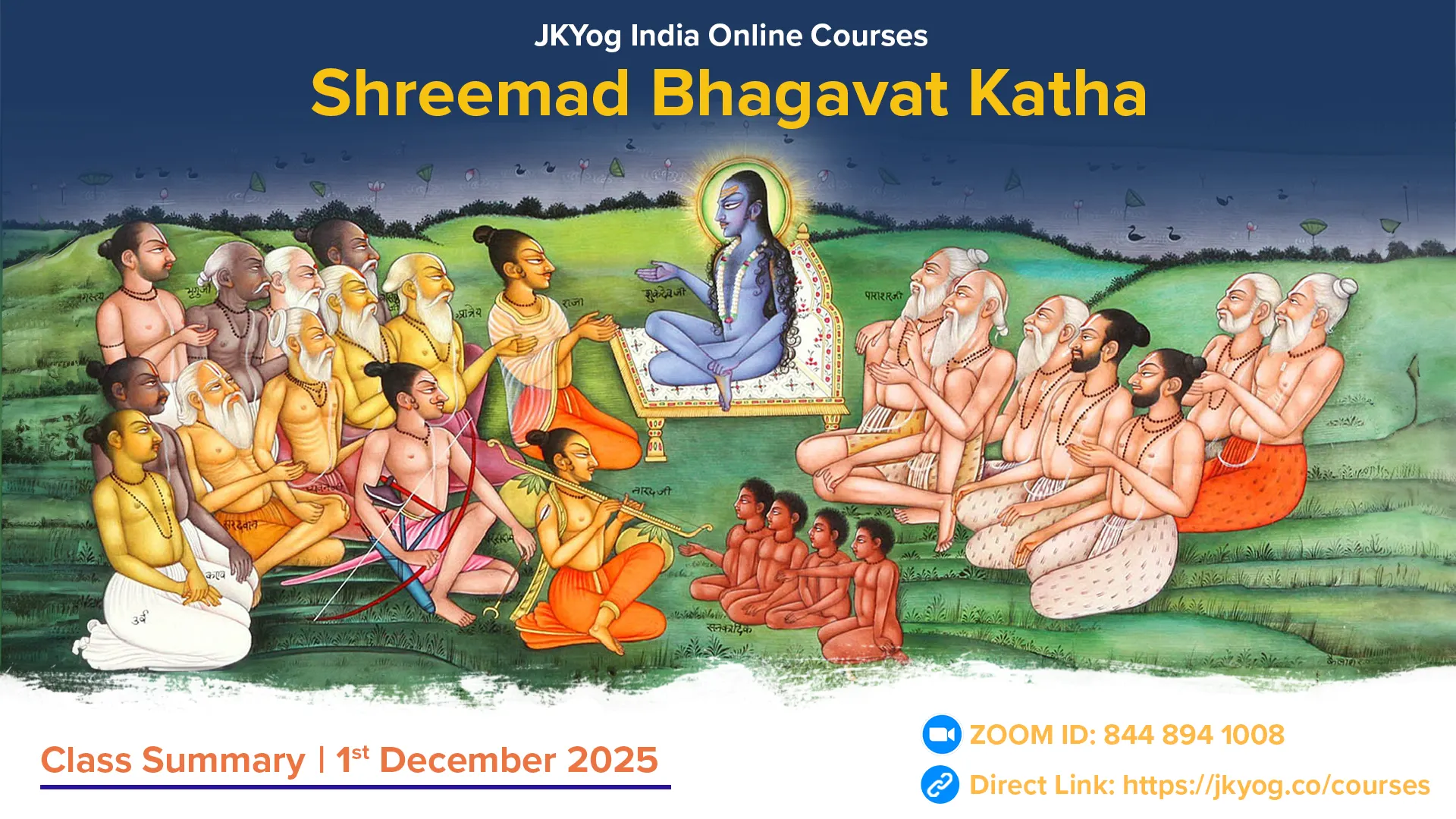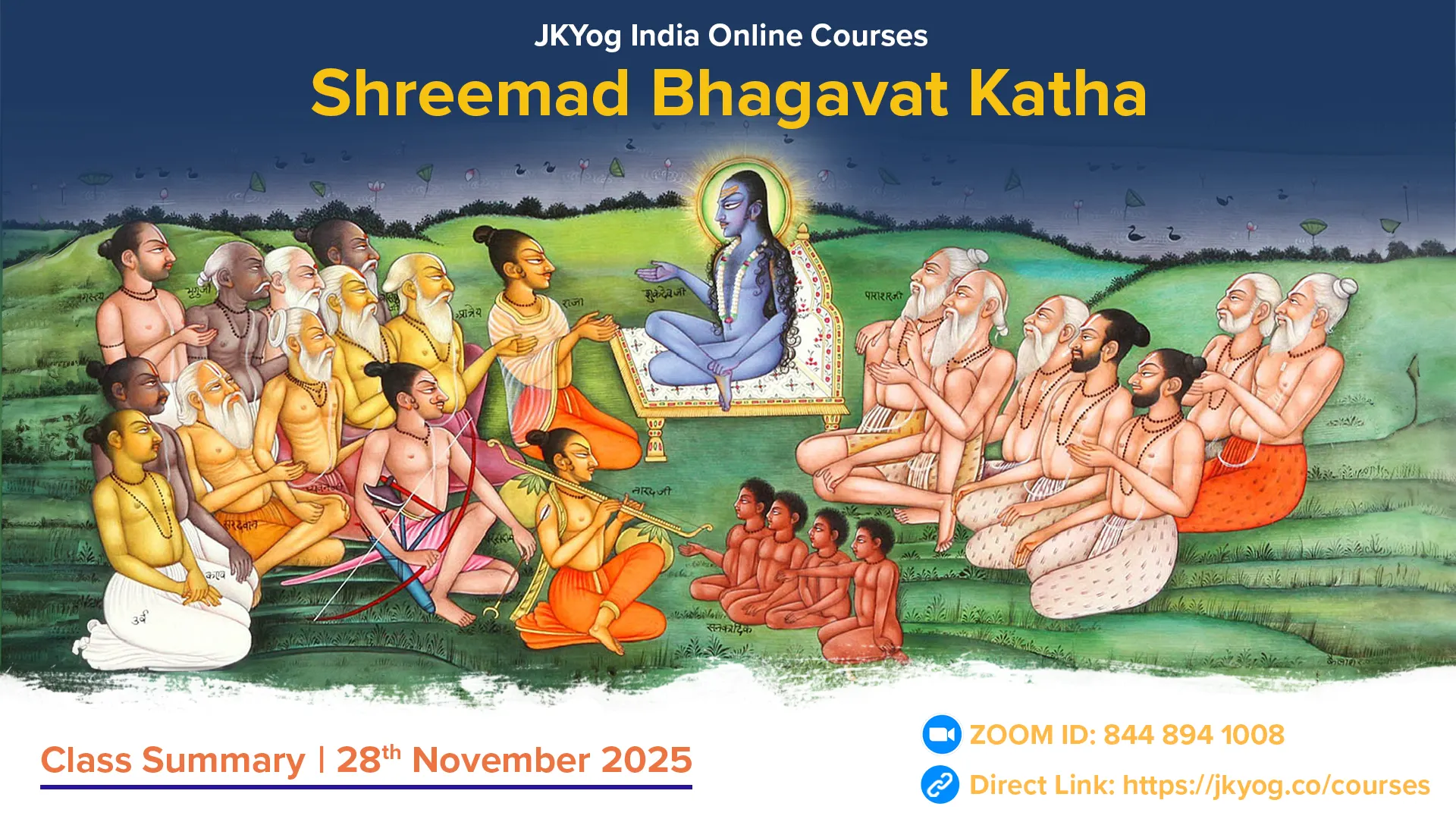Shreemad Bhagavat Mahapuran- Canto: 7, Chapters: 10-11
Naradji says to Yudhishthir, "O King! You had asked me a question: how did those like Shishupal, who harboured enmity towards Bhagwan, attain a divine form equal to His — that is, Sāroopya Mukti (liberation with the same form as Bhagwan)? I have now answered your query. Hiranyaksha and Hiranyakashipu, then Ravan and Kumbhakarna, and finally Shishupal and Dantavakra — all of them maintained hostility towards Shree Krishna throughout their lives. Yet, even at the moment of death, their minds were fully absorbed in Him. Due to this constant meditation (even through enmity), they attained the divine form of Bhagwan. This is just like the Bhringi (beetle) insect, which traps a regular insect in its burrow. Out of fear, the trapped insect constantly thinks of the Bhringi and ultimately assumes its form. In the same way — whether through love or hatred — if one’s mind becomes fully absorbed in Bhagwan, it becomes the cause of liberation."
Naradji continues:
"One who attentively reads or listens to the divine pastimes of Bhagwan in His Narasimha form — the slaying of Hiranyakashipu, and the devotion, knowledge, and greatness of Prahladji — attains the fearless realm of Bhagwan, Vaikuntha Dham.
"One who attentively reads or listens to the divine pastimes of Bhagwan in His Narasimha form — the slaying of Hiranyakashipu, and the devotion, knowledge, and greatness of Prahladji — attains the fearless realm of Bhagwan, Vaikuntha Dham.
O Yudhishthir! You humans are immensely fortunate, for the Supreme Being, Shree Krishna — the Parabrahma Paramatma Himself — resides in your home in human form, secretly. That is why sages and rishis who sanctify the entire world keep coming to your palace again and again just to have His darshan. The same Supreme Being, whom even the greatest saints constantly seek — who is beyond Maya, the embodiment of peace and supreme bliss — He is your dearest, well-wisher, friend, revered one, obedient one, Guru, and very Self — Shree Krishna!
Even gods like Shankar and Brahma, despite applying their full intellect, could not define Him as “This is what He is.” So, how can ordinary beings like us describe Him? We can only worship Him through silence, devotion, and self-restraint. May He kindly accept our worship. May the devotee-loving Bhagwan Shree Krishna be pleased with us. In ancient times, when the demon Mayasur attempted to tarnish the glory of Bhagwan Rudra, it was Shree Krishna who protected and even enhanced the glory of Mahadev."
Yudhishthir then asked Naradji, "What was Mayasur trying to do that would have defamed Rudraji? And how did Shree Krishna protect him? Please tell me."
Naradji replied —
"Once, empowered by Shree Krishna, the devas defeated the asuras in battle. At that time, all the defeated asuras sought refuge in their supreme guru of sorcery, Mayasur. This powerful demon created three flying cities out of gold, silver, and iron. These were not mere aircraft but full-fledged, miraculous floating fortresses known as Tripur. They moved so mysteriously that their movement was imperceptible. These flying citadels were filled with endless resources. The daitya generals already harboured deep hatred for the devas and all three worlds. Hiding in these flying cities, they began destroying everything.
"Once, empowered by Shree Krishna, the devas defeated the asuras in battle. At that time, all the defeated asuras sought refuge in their supreme guru of sorcery, Mayasur. This powerful demon created three flying cities out of gold, silver, and iron. These were not mere aircraft but full-fledged, miraculous floating fortresses known as Tripur. They moved so mysteriously that their movement was imperceptible. These flying citadels were filled with endless resources. The daitya generals already harboured deep hatred for the devas and all three worlds. Hiding in these flying cities, they began destroying everything.
Troubled, the devas approached Bhagwan Shankar, saying, “O Mahadev! The asuras residing in Tripur are killing us. Please protect us.”
Shankarji reassured them, saying, “Do not fear.” He then prepared to destroy the Tripur cities. Placing an arrow on His bow, He shot it towards Tripur. The arrow emitted blazing fire, like the rays of the sun, engulfing the cities. Asuras began to fall, scorched by the divine weapon. However, the master of illusion, Mayasur, revived the fallen asuras by immersing them in a well of divine nectar (amrit) he had created. The moment they touched the nectar, the asuras sprang back to life, even more powerful and radiant.
When Shree Krishna saw that Mahadevji was saddened by his mission’s failure, He devised a divine plan. Bhagwan Vishnu assumed the form of a cow, and Brahmaji became a calf. At midday, both entered the Tripur cities and drank up all the nectar from the miraculous well. Though the demon guards saw them, Bhagwan’s Maya deluded them so much that they couldn’t stop them.
When Mayasur came to know of this, he calmly reflected on Bhagwan’s divine play and did not grieve. He told the grieving guards, “Dear ones! No being — whether deva, asura, or human — can change what is destined, be it for oneself or others. What was to happen has happened. Why grieve now?”
Then, Bhagwan Shree Krishna, through His divine powers, arranged all the necessary weapons and equipment for Bhagwan Shankar’s battle. He created:
- A chariot from Dharma,
- A charioteer from Jnana (knowledge),
- A flag from Vairagya (renunciation),
- Horses from Aishwarya (divine opulence),
- A bow from Tapasya (penance),
- Armour from Vidya (wisdom),
- Arrows from Kriya (right action), and
- Other materials from His other divine powers.
Adorned with these divine elements, Bhagwan Shankar mounted the chariot, holding His bow and arrow. At an auspicious moment (Abhijit Muhurat), He shot an arrow that burnt the undefeatable flying fortresses to ashes. At that moment, divine drums echoed in the heavens. The devas, rishis, ancestors, and siddhas celebrated joyfully and showered flowers. The apsaras sang and danced.
Thus, having destroyed Tripur, Bhagwan Shankar earned the title Purari (Destroyer of the Tripurs) and returned to His abode while listening to the praises of Brahma and the devas.
Naradji, narrating this tale, concludes:
"It is Bhagwan Shree Krishna who orchestrates all these divine pastimes. He performs these acts in a human-like manner through His Maya, and the sages sing of His world-purifying lilas. Tell me, Yudhishthir, what more would you like to hear now?"
"It is Bhagwan Shree Krishna who orchestrates all these divine pastimes. He performs these acts in a human-like manner through His Maya, and the sages sing of His world-purifying lilas. Tell me, Yudhishthir, what more would you like to hear now?"
Duties of Humans According to Varna and Ashram
Shree Shukadevji says that when Yudhishthir heard the sacred story of Prahladji from Naradji, he became deeply pleased. Filled with joy, he asked another question:
"Bhagavan! Now I wish to hear about the Dharma — duties — of human beings as per the divisions of Varna (social class) and Ashram (stage of life). For it is through Dharma alone that one attains Jnana (divine knowledge), Bhagavat-prem (love for Bhagwan), and ultimately the Supreme Person Himself. You are the divine son of Brahmaji, and your tapasya, yog, and samadhi are so exalted that even Brahmaji regards you more highly than his other sons. No one understands the subtle truths of Dharma as clearly as you do."
"Bhagavan! Now I wish to hear about the Dharma — duties — of human beings as per the divisions of Varna (social class) and Ashram (stage of life). For it is through Dharma alone that one attains Jnana (divine knowledge), Bhagavat-prem (love for Bhagwan), and ultimately the Supreme Person Himself. You are the divine son of Brahmaji, and your tapasya, yog, and samadhi are so exalted that even Brahmaji regards you more highly than his other sons. No one understands the subtle truths of Dharma as clearly as you do."
Naradji replied:
"O Yudhishthir! The root of all Dharmas is Bhagwan Himself — the unborn, eternal one. For the welfare of the entire moving and non-moving creation, He descends in portions of His own Self, in the form of the son of Dharma and Murti, and is now engaged in austerity at Badrikashram. First offering my salutations to that same Bhagwan Narayan, I will now narrate the eternal Sanatan Dharma to you, as I have heard directly from His divine mouth."
"O Yudhishthir! The root of all Dharmas is Bhagwan Himself — the unborn, eternal one. For the welfare of the entire moving and non-moving creation, He descends in portions of His own Self, in the form of the son of Dharma and Murti, and is now engaged in austerity at Badrikashram. First offering my salutations to that same Bhagwan Narayan, I will now narrate the eternal Sanatan Dharma to you, as I have heard directly from His divine mouth."
Dharma-moolam hi Bhagavan sarva-vedamayo Harih
Smritam cha tadvidaam rajan yena chatma praseedati
O Yudhishthir! The root of Dharma is Bhagwan Hari, who embodies the essence of all the Vedas. The Smritis authored by those sages who realise His truth are also the basis of Dharma. And that action that brings inner peace and not guilt to the soul is known as Dharma. (Bhagavat 7.11.7)
The Thirty Traits of Dharma
Satyam daya tapah shaucham titiksha iksha shamo damah
Ahimsa brahmacharyam cha tyagah svadhyaya aarjavam
Santosha samadrik seva gramya-iho-paramah shanaih
Nrinam viparyaya-iksha maunam atma-vimarshanam
Annadyadeh samvibhago bhutebhyash cha yatharhatah
Teshv atma-devata-buddhih sutaram nrishu Pandava
Shravanam kirtanam chasya smaranam mahatam gateh
Seva ijya avanatir dasyam sakhyam atma-samarpanam
Nrinam ayam paro dharmah sarvesham samudahritah
Trimshat lakshanavan rajan sarvatma yena tushyati
O Yudhishthir! The scriptures describe thirty characteristics of Dharma, which are considered the supreme path for every human being. These qualities are: (1) truthfulness (satyam), (2) compassion (daya), (3) austerity (tapah), (4) cleanliness (shaucham), (5) forbearance (titiksha), (6) inner vision (iksha), (7) control of the mind (shamah), (8) control of the senses (damah), (9) non-violence (ahimsa), (10) celibacy or chastity (brahmacharyam), (11) renunciation (tyagah), (12) scriptural study (svadhyayah), (13) simplicity (arjavam), (14) contentment (santosha), (15) service to saintly souls who are equal-minded towards all beings, (16) gradual withdrawal from the craving for sense pleasures, (17) understanding that ego-based effort brings negative results, (18) silence and self-reflection (maun and atma-chintan), (19) proper sharing of food and resources among all living beings, (20) seeing the soul and beloved deity present especially in all human beings, (21) taking refuge in saints, (22) listening to the names, qualities, and pastimes of Bhagwan Shree Krishna, (23) singing or chanting them, (24) remembering them lovingly, (25) serving Bhagwan, (26) performing worship (puja), (27) offering prostrations (namaskar), (28) maintaining a servant-like attitude toward Him (dasya bhav), (29) relating to Him as a friend (sakhya bhav), and (30) complete self-surrender (atma-nivedan). By practising these thirty qualities, Bhagwan Shree Krishna—the Supreme Soul present in all beings—becomes extremely pleased. This alone is the eternal and supreme Dharma of all human beings. (Bhagavat 7.11.8–12)
Duties and Means of Livelihood for the Dvija Classes
Naradji said to Dharmaraj Yudhishthir: Those born in families where sacred rites (sanskars) have always been observed are known as Dvija (twice-born). For these Dvijas, specific duties such as (1) performing yajnas (sacrifices), (2) studying the scriptures, (3) giving charity, and (4) maintaining brahmacharya (celibacy and self-restraint) are prescribed.
For a Brahmin, six core duties (ṣaṭkarma) are mentioned: (1) studying the Vedas, (2) teaching the Vedas, (3) performing sacrifices, (4) officiating sacrifices for others, (5) giving in charity, and (6) receiving charity.
A Kshatriya should not receive charity; his livelihood should come from taxes, fines, and public administration. A Vaishya must earn through (1) agriculture, (2) cow protection, and (3) trade. The duty of a Shudra is service.
For Brahmins, there are four modes of earning a livelihood: (1) Vartaa– engaging in commerce, agriculture, cattle rearing, or other professions; (2) Shaleen – sustaining life based on scriptural study and teaching, performing yajnas, and giving/receiving daan; (3) Yayavar – wandering and living by begging; (4) Shilonchana – living by collecting fallen grains from fields (gleaning). Among these, Shiloñchana is considered the purest and most honourable. A person of lower varna should not adopt the means of livelihood of a higher varna unless there is a genuine emergency. In times of crisis, anyone may adopt any means of livelihood. Among the recognised types of livelihood (vṛttis), the following are permitted:
- Rit: Living by collecting market leftovers or grains scattered in fields;
- Amrit: Living on unsolicited alms (what comes naturally without asking – shālin);
- Mrit: Living by daily begging;
- Pramrit: Living by agriculture or professions;
- Satyanrit: Engaging in trade;
Apart from the above, Shvanvritti is behaving like a dog to please superiors. This is strictly prohibited for all.
Shamo damas tapah shaucham santoshah kshantir aarjavam
Jnanam daya-achyut-atmatvam satyam cha brahma-lakshanam
Peacefulness (shama), sense control (dama), austerity (tapa), internal and external purity (shaucha), contentment (santosha), forgiveness (kshama), simplicity (arjava), knowledge (jnana), compassion (daya), devotion to the Supreme (Achyutaatmatva), and truthfulness (satya) — these are the qualities of a Brahmin. (Bhagavat 7.11.21)
Shauryam veeryam dhritis tejah tyaga atma-jayah kshama
Brahmanyata prasadashcha satyam cha kshatra-lakshanam
Valour in battle (shaurya), heroism (veerya), steadfastness (dhriti), brilliance (tejah),
generosity (tyaga), self-control (atma-jaya), forgiveness (kshama), devotion to Brahmins (brahmanyata), graciousness (prasada), and truthfulness (satya) —
these are the qualities of a Kshatriya. (Bhagavat 7.11.22)
Deva-gurv-achyute bhaktih trivarga-pariposhanam
Aastikyam udyamo nityam naipunyam vaishya-lakshanam
Devotion to the gods, guru, and Bhagwan, the effort to uphold Dharma, Artha, and Kama (three goals of life), faith in Vedic authority (astikyam), constant industriousness (udyama),
and practical competence (naipunya) — these are the qualities of a Vaishya. (Bhagavat 7.11.23)
Shudrasya sannatih shaucham seva svaminyamaayaya
Amantra-yajno hy asteyam satyam go-vipra-rakshanam
Humility (sannati), cleanliness (shaucha), service (seva), loyalty to one’s master (svaminyam), engaging in yajnas even without mantras (amantra-yajna), refraining from theft (asteyam), truthfulness (satya), and protection of cows and Brahmins — these are the qualities of a Shudra. (Bhagavat 7.11.24)
The sages and seers, well-versed in the Vedas, have prescribed Dharma over the ages based on human nature. This Dharma brings well-being in both this world and the next. One who follows their natural duties (svadharma) can gradually rise above their desires and qualities. Just as soil becomes exhausted when repeatedly sown and eventually stops producing crops, similarly, the mind grows weary of sensual pleasures. A few indulgences keep the mind greedy, but when indulgence becomes excessive, the mind may develop dispassion, just like fire burns steadily with drops of ghee, but is extinguished when too much ghee is poured all at once.
Yasya yallakshanam proktam pumso varna-abhi-vyanjakam
Yad anyatraapi drishyeta tat tenaiva vinirdishet
Whatever qualities have been described as characteristic of a particular varna (social order), if those same qualities are found in someone of another varna, he should be classified according to those qualities, and not merely by birth. (Bhagavat 7.11.35)
Brahmana-kshatriya-visham shudranam cha parantapa
Karmani pravi-bhaktaani svabhaava-prabhavair gunaih
The duties of the Brahmins, Kshatriyas, Vaishyas, and Shudras are distributed according to their qualities, in accordance with their guṇas (and not by birth). (Gita 18.41)
Dharma in Kaliyug
In Satya Yug, Treta Yug, and Dwapar Yug, following Varnashram Dharma (the duties based on one's varna and ashram) was relatively easy, because during those ages, people possessed high levels of austerity, self-restraint, truthfulness, and longevity. The purpose of life was clear, and the spirit of self-realisation and spiritual progress was deeply ingrained in society.
However, in Kaliyug, this system has largely remained confined to scriptures — in practice, it is almost extinct. The reason is that from birth itself, human tendencies are increasingly distorted and undisciplined; the strength for tapas (austerity) and restraint has become very weak; faith in Dharma and spiritual inquiry is declining day by day in society; and most people don’t even wish to understand the true consequences of their actions.
As a result, in today's age, following Varnashram Dharma is neither easy nor practical, and in most cases, it is misused. Observing all these faults, the shastras declare that in Kaliyug, the true means of spiritual progress is charity (daan) and Hari Naam Sankirtan (chanting the holy names of Bhagwan) — not ritualistic Dharma, karma, or yajnas.
Chaitanya Charitamrita
Harer naam harer naam harer naamaiva kevalam
Kalau nasty eva nasty eva nasty eva gatir anyatha
In Kaliyug, only the divine name of Hari is the shelter. There is no other way, no other way, absolutely no other way for liberation except chanting the divine names of Bhagwan Hari.
Ramcharitmanas
Kalijug jog na yajna na gyana
Ek adhaar Ram gun gana
Sab bharos taji jo bhaj Ramahi
Prem samet gaav gun gramahi
In Kaliyug, neither yog, yajna, nor spiritual knowledge is effective. Only singing the glories of Bhagwan Ram is the one true foundation. One who gives up all other hopes and lovingly sings His virtues achieves true devotion and liberation.
Shreemad Bhagavat Mahapuran
Kaler dosha-nidhe rajan asti hy eko mahan gunah
Kirtanaad eva Krishnasya mukta-sangah param vrajet
O King! Kaliyug is an ocean of faults, but it has one great quality- by chanting the divine names of Krishna, one becomes free from attachments and attains the supreme goal.
Krite yad dhyayato Vishnum Tretayam yajato makhaih
Dvapare paricharyayam Kalau tad Hari-kirtanat
In Satya Yug, Bhagwan Vishnu is worshipped through meditation. In the Treta Yug, by performing sacrifices. In Dvapar Yug, through ritualistic worship and service. But in Kaliyug, He is attained simply by chanting His divine names.
Parashara Smriti
Tapah param Krita-yuge Tretayam jnanam uchyate
Dvapare yajnam ity uchuh danam ekam Kalau yuge
In Satya Yug, penance is supreme. In the Treta Yug, spiritual knowledge is most effective. In Dvapara Yug, sacrifices are emphasised. But in Kaliyug, daan (charity or donation) is the foremost path for spiritual upliftment.
Summary: JKYog India Online Class- Shreemad Bhagavat Katha [Hindi]- 19.05.2025

